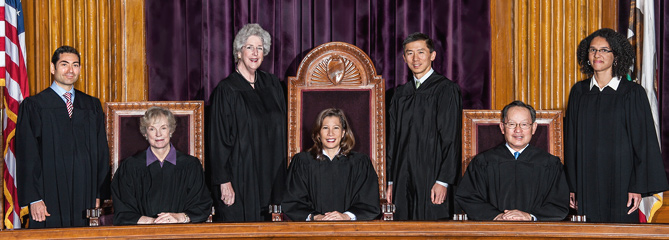California Supreme Court Continues to Expand Its Environmental Docket
Justices Considering Unprecedented Number & Variety of Environmental Law Issues
At the beginning of 2015, I posted on this site an analysis of the California Supreme Court’s environmental law docket. My conclusion was that California’s highest court was showing unprecedented interest in environmental law–as demonstrated by the fact that it then had pending nine cases arising under the California Environmental Quality Act (CEQA) and 20 pending environmental cases overall.

One obvious question was whether that fact represented a one-time aberration or, alternatively, a major continuing trend. I’ve returned to that subject as I prepare for a presentation at this week’s Environmental Law Conference at Yosemite on key, recent environmental law developments in the California Supreme Court and federal appellate courts.
After analyzing the updated California Supreme Court statistics, I’ve concluded that the pattern identified 10 months ago is not persisting. It’s expanding–dramatically. And the justices’ expansion of their environmental docket, counterintuitively, is coming at a time when their overall productivity is actually declining.
Whereas the court at the beginning of this year had 20 pending environmental cases before it, ten months later the overall number of environmental cases now before the justices has risen to 28–a 40% increase in less than a year.
Of the currently-pending environmental law cases before the Supreme Court, the largest fraction–seven cases–concerns CEQA. (And that number doesn’t include two more CEQA cases that the justices decided earlier this year.) Two of the currently-pending CEQA cases were argued before the justices in recent weeks, with opinions due by the end of 2015.
But the justices are also demonstrating growing interest in an array of environmental law issues besides CEQA. These include whether various challenged state and local government regulatory programs effect an unconstitutional “taking” of private property requiring compensation (three pending cases); if particular state regulatory or litigation initiatives are preempted by federal law (four cases); and whether various local government assessments imposed to fund environmental programs constitute an illegal “tax” in violation of California’s Propositions 26 and/or 218 (three pending cases).
Other environmental law cases currently pending before the California Supreme Court involve such diverse issues as state land use and general planning laws (two cases); the California Endangered Species Act (two cases); and the intersection of First Amendment and environmental law (two cases).
The California Supreme Court’s burgeoning environmental law docket comes at a time when the Court’s overall productivity has actually declined. From September 1, 2014 to August 31, 2015, the justices issued only 72 opinions–a significant decrease from the 83 published opinions a year earlier. (That reduction may be an aberration, and reflective of the fact that the court has had two veteran justices recently retire and two–Mariano-Florentino Cuellar and Leondra Krueger–newly-appointed within the past year.)
One postscript to this California Supreme Court overview: an environmental law confrontation may be looming between that court and the U.S. Supreme Court–one reminiscent of the seemingly-ongoing environmental law conflicts between the High Court and the U.S. Court of Appeals for the Ninth Circuit. As reported on this site, this past June the California Supreme Court in California Building Industry Association v. City of San Jose rejected developers’ takings challenge to San Jose’s inclusionary housing ordinance. The developers, represented by the Pacific Legal Foundation, have filed a petition for certiorari with the U.S. Supreme Court seeking review of the California’s court’s constitutional ruling. While the Supremes reject far more cert petitions than they grant, the City of San Jose case raises Takings Clause questions in which the Roberts Court has demonstrated considerable interest in recent years. So I for one will not be surprised if the U.S. Supreme Court grants certiorari in City of San Jose.
All things considered, the California Supreme Court’s pending–and decided–environmental law cases reflect a remarkable trend. At a time when the Supreme Court’s overall bandwidth seems to be decreasing, its appetite for a wide array of environmental law cases and controversies continues to expand. The California Supreme Court’s environmental law footprint similarly promises to increase in both size and influence.
(Special thanks to California Principal Deputy Solicitor General Janill Richards–a fellow speaker at this weekend’s Yosemite Conference–whose research contributed to this post.)







Reader Comments